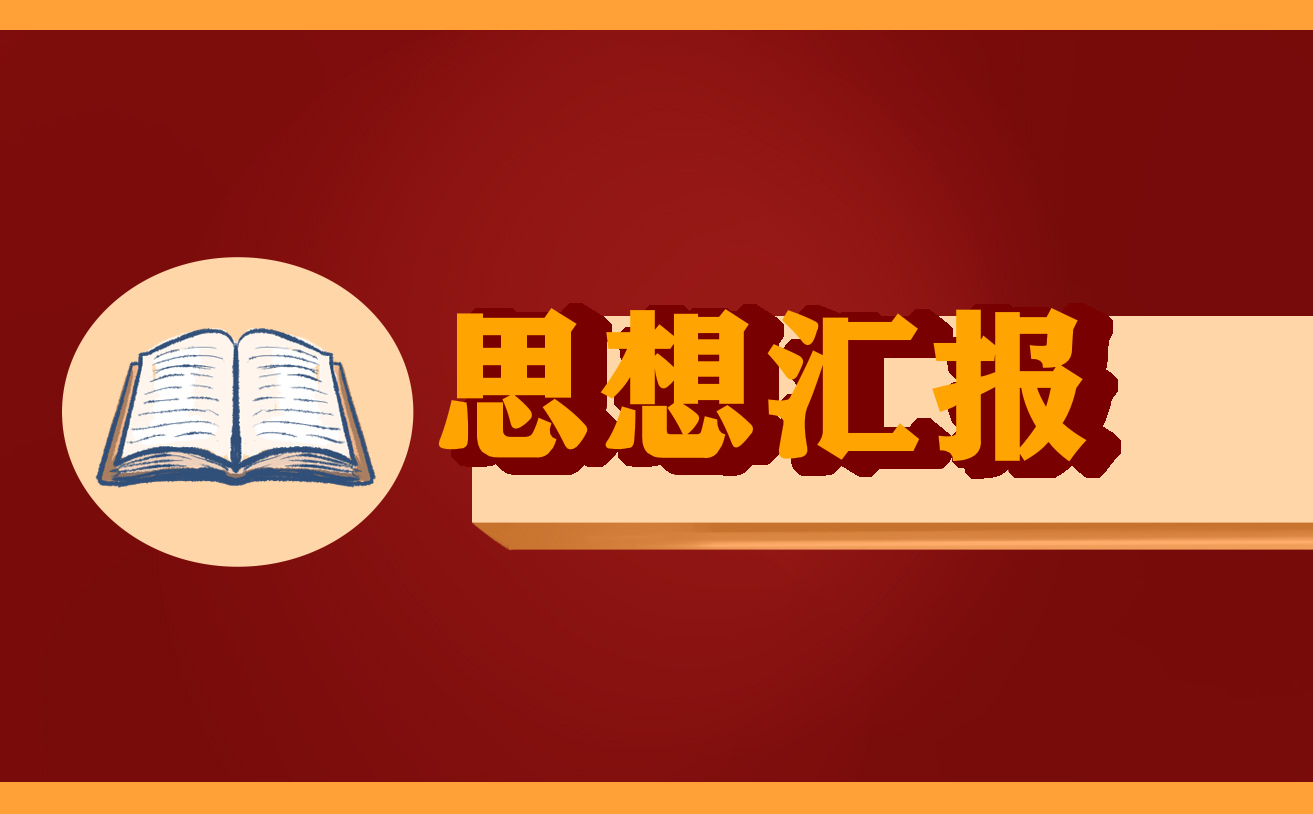-
优秀美文摘抄记叙文8篇
优秀美文摘抄记叙文出生意味着即将开始,这是一个你无权选择的时刻。为你建好的平台早已静静等待。也许是船,也许是车,也许是飞机,或许根本就是一个空白。人生的开始
【美文】
日期:2024-01-05
-
2023年度美文片段4篇
美文片段1、你是那样的渺小,令人瞧不上眼。可每当看见你从墙缝、瓦砾、屋脊,甚至坚硬的石缝里钻出来的时候,就不能不为你那顽强的生命力所折眼,发出由衷的赞叹。2
【美文】
日期:2024-03-14
-
情感美文摘抄4篇
情感美文摘抄朋友,你带着馨香,拨开草丛,轻盈地走来……你像风中的野百合,那么质朴,那么纯洁,不带一点虚伪,真诚地将我融化。当梦想撞碎在冬日寒冷的肩头,是你为
【美文】
日期:2024-01-02
-
2023年度600字热门美文摘抄优秀5篇
600字热门美文摘抄优秀兔子弃长补短,以它的弱项代替擅长的奔跑,不禁令人哑然失笑。可你又何尝不是呢?我的西安!巍巍的城墙是你千年不变的沧桑容颜;淙淙的护城河
【美文】
日期:2023-12-14
-
2023年经典美文摘抄13篇
经典美文摘抄春天,树叶开始闪出黄青,花苞轻轻地在风中摆动,似乎还带着一种冬天的昏黄。可是只要经过一场春雨的洗淋,那种颜色和神态是难以想像的。每一棵树仿佛都睁
【美文】
日期:2023-11-30
-
高中摘抄美文八百字优秀3篇
高中摘抄美文八百字优秀生命之中总有一些记忆深埋在我们心底,尽管时间飞逝,它们也不会因此而消了颜色,褪了芬芳,反而在时间的冲洗下愈加鲜艳,成为温暖我们一生的财
【美文】
日期:2023-11-19
-
【西施泪】 镜花风月之西施泪完整在线
如果是一朵花,它不仅是一朵花 它还是过去、现在和未来 如果是一个故事,它也不仅是一个故事 它还
【美文】
日期:2019-01-05
-
本能青橙 [本能]
残雪,原名邓小华,1953年生于长沙。1985年开始发表作品。她的“先锋小说”《山上的小屋》、《饲养
【美文】
日期:2019-03-16
-
[校园往事]校园往事小雪篇
空气中笼罩着――层薄薄的雾气,显得有点儿潮湿,蓝色的天空被白云覆盖着,非常阴沉,没有一点儿生机。
【美文】
日期:2019-01-02
-
结婚庆典致辞 钢铁工程竣工投产仪式致辞
各位领导,各位来宾,全体同志们:中原大地绽放光芒,美丽钢城喜事连连。今天,120吨转炉—炉卷轧机相关
【美文】
日期:2020-03-23
-
同义句的转换_同义句转换翻译器
同义句转换常常出现在句型转换及听力理解等题型中。能否灵活、准确地进行同义句转换,是英语交际能力强弱的
【文章】
日期:2019-01-25
-
有关中国传统文化的大学生论文|中国传统文化论文3000
舞狮是中国传统文化中对全世界华人民族都有重要意义的一项传统技艺,它代表着华人的传统习俗,也是一项优秀的中国传统技艺。以下是小编整理分享的关于有关中国传统文化的大
【文章】
日期:2019-10-08
-
学院国家安全教育日主题团日活动方案
学院XX年国家安全教育日主题团日活动方案 各学院、分团委: 为贯彻落实〈〈xx省XX年全民国家安全教
【文章】
日期:2020-09-11
-
逻辑在立法中的规范作用:法律逻辑学试题及答案
法律是人们的行为规范,是审判机关作出裁判的依据,因此立法中,法律概念要明确,不能含糊不清;法律规定要
【文章】
日期:2019-04-01
-
我因剪发而心痛|剪发心痛记_剪之惑
天可真热啊!我习惯地把手伸到脑后一撩,谁知却撩了个空,这才意识到我已经没有长发了。 说到少女的魅力
【文章】
日期:2019-01-03
-
金文汉字对照表_金文
青铜器在甲骨文盛行的殷商时期,就已经出现。古人称铜为金,铸或者刻在青铜器上的文字(铭文),就被称为金
【文章】
日期:2019-02-24
-
[比较优势理论的发展研究]比较优势理论优缺点
[摘要]比较优势理论作为国际贸易理论中的经典理论,目前主要有规模经济分析、R&D分析、人力资本配置分
【文章】
日期:2019-05-25
-
世界上名字最长的国家_世界上最长国家的名字是什么
你知道世界上最长国家的名字是什么吗?长长的名字看起赖很酷,下面就有小编为您介绍一下世界上最长国家的名字吧。 世界上最长国家的名字 圣多美和普林西比民主共和国
【文章】
日期:2019-10-29
-
开展四讲四爱主题教育实践活动方案
开展四讲四爱主题教育实践活动的方案 “四讲四爱”喜迎党的十九大主题教育实践活动是以党委推进“两学一
【文章】
日期:2020-11-07
-
比较级表达最高级句型 [比较级句型,最高级含义]
英语中大多数的形容词和副词都有比较级结构,用于两者之间进行比较。但有时候,比较级句型也能表达最高级含
【文章】
日期:2019-01-25
-
2017年社区作风自查及整改措施
社区作风自查及整改措施 一、存在的主要问题和原因 问题一:社区工作人员工作能力有待于提高,尤其是电脑
【散文】
日期:2020-11-03
-
幼儿园小班班级德育工作计划
XX年幼儿园小班班级德育工作计划 德育计划是很重要的,为大家整理了XX幼儿园小班班 级德育工作计划,
【散文】
日期:2020-09-12
-
沟通怎样才能无极限_怎样才能加无极限代理
[摘要]教育是一件复杂的事儿,老师和学生之间,平时说的话不少,但是能真正做到心意互达、效果显著的却是
【散文】
日期:2019-01-20
-
关于恐龙的小说_史前大冒险
【散文】
日期:2018-12-28
-
物价局2011年上半年价格管理科工作总结
一、根据市场价格部门联席会议精神和《市政府办公室关于稳定市场物价开展市场秩序专项检查的通知》要求,组
【散文】
日期:2020-10-08
-
qq空间说说心情短语_有关毕业的qq空间说说短语
毕业了,曾经在一起的打打闹闹也已经远去。下面是小编搜集整理的一些有关毕业的说说内容,希望对你有帮助。 有关毕业的说说推荐 1)今天,我们是亲密的同学;明天,
【散文】
日期:2019-11-18
-
【农发办科学发展观心得体会】 农发办怎么样
党的十六届三中全会进一步明确提出了“坚持以人为本,树立全面、协调、可持续的发展观,促进经济社会和人的
【散文】
日期:2020-02-17
-
【手机淘宝:创意广告提升品牌知名度】知名度广告
近日,你在地铁、公交或电梯里可能会看到一个非常有创意的广告:一个手形人在公园等女朋友的时候,利用等待
【散文】
日期:2019-05-08
-
畜牧兽医局副局长在2010年全县春防工作会议上的讲话
同志们: 前面县动物卫生监督所王所长总结了09年的动物卫生监督工作,安排部署了今年的动物卫生监督工
【散文】
日期:2021-01-09
-
【浅析市县行政事业单位财务预算管理】行政事业单位财务预算管理意义
摘要:预算管理是行政事业单位财务管理的核心工作,科学的预算管理可以实现财务收支的有效控制和资源的优化
【散文】
日期:2019-04-09
-
【最美好时光】 最美的时光番外三怀孕
体育课上,天阴沉沉的,一堆堆黑云压抑着,积聚着,仿佛一触即发。太阳也早早躲藏起来,操场上只有躁动不安
【日记】
日期:2019-01-01
-
【我的支教经历:山那边的孩子】农村支教春琳,小花性经历
2010年9月10日,教师节。我们这支斑玛县吉卡乡顶岗支教小分队正式开拔,为期3个月的支教生活由此开
【日记】
日期:2019-05-08
-
魔幻时钟:魔法时钟的馈赠安然
夜晚,我在灯下看书,不经意地瞥见了时钟:九点三十分。 不早不晚,时间偏偏在这个钟点与目光相遇。时问
【日记】
日期:2019-02-27
-
【小杯子,变身大创意】创意小制作杯子
2010年曾经流行一个词语:杯具。杯子就被赋予了更深层次的含义。今天,杯子不再仅仅是为了满足人们饮水
【日记】
日期:2019-01-12
-
IDEO,设计改变一切
IDEO,设计改变一切 设计思维,对于经历过经济危机,正在努力从制造转型与升级的中国企业尤为重要,产
【日记】
日期:2020-09-07
-
野菊_野菊花的功效与作用
我家不善种花,唯有一盆白色的菊花立在阳台上。 冬天,外边的寒气逼人,我第一个想到的就是我那盆心爱的
【日记】
日期:2019-01-27
-
幼儿园开学第一课安全教育活动总结
幼儿园开学第一课安全教育活动总结 【提要】本篇《幼儿园开学第一课安全教育活动总结》是66test小编
【日记】
日期:2020-10-22
-
隋唐妇女用什么画眉 唐代的妇女画眉
一 妇女画眉是人类文明进步的标志之一。旧题汉刘歆撰《西京杂记》卷二:“文君(卓文君)姣好,眉色
【日记】
日期:2018-12-30
-
从教教材到用教材_教材帮电子版
语文教师备课或者上课时是在“教教材”还是在“用教材”,反映了两种完全不同的教学观念。“教教材”是把教
【日记】
日期:2019-04-10
-
我国农业补贴存在的问题及建议
摘要:农业补贴是政府对“三农”支持与保护的重要手段之一,文章通过简要介绍农业补贴内涵及政策支持近况,
【日记】
日期:2020-11-07
-
钱钟书《 论快乐》原文与赏析 [论快乐]
每个人都希望有快乐的人生,但并非每个人都懂得快乐的真谛。从古至今,纷繁复杂的文化酝酿出各种各样的快乐
【诗歌】
日期:2019-02-09
-
[以书入画,,以情入墨] 淡墨书画小说作品集
王梦石(原名王义兵),号敬亭山人,1975年生,安徽宣城人。现居北京,专业从事书画创作。现为浙江省杭
【诗歌】
日期:2019-04-25
-
十六、短评:什么是短评
(一)短评的含义和特点短评是一种篇幅短小、内容集中、简明扼要、运用灵活的言论。与社论、评论员文章相比
【诗歌】
日期:2020-02-15
-
请观众鼓掌的顺口溜【做一名会鼓掌的观众】
有人曾问过我,作为一名教师,我最骄傲的地方是什么?我说,那是我让自己的每一个学生都学会了鼓掌。 当
【诗歌】
日期:2019-01-02
-
《三年》木明思【三年】
大家在一起已经三年了吧。三年对于一个正常人的生命来说不算太长,但,正是这三年,让我们从陌生到熟悉,从
【诗歌】
日期:2018-12-28
-
村委会公章管理规定|村委会的公章由谁保管
结合本村实际,民政部、公安部以及上级有关部门制定了对村委会公章使用和管理的有关规定,下面小编给大家介绍关于村委会公章管理规定的相关资料,希望对您有所帮助。 村
【诗歌】
日期:2019-10-22
-
[“行李”古今谈] 行李古今异义
“行李”是古今常用的词语,但是古、今的“行李”读音和含义却是有区别的。下面笔者就谈谈古今“行李”的区
【诗歌】
日期:2019-01-10
-
国有企业干部管理规定|国有企业干部管理办法
2009年12月,国资委发布《国有企业干部管理办法》,从制度上对国有企业干部管理业务进行了细致梳理,下面小编给大家介绍国有企业干部管理规定的相关资料,希望对您有
【诗歌】
日期:2019-08-30
-
以案为镜心得体会
以案为镜心得体会 近阶阶段,我区积推进党的群众路路线教育活动,我以此为契机机,再次认真研读了由我区纪
【诗歌】
日期:2020-10-16
-
[白头翁]白头翁鸟多少钱一只
Longago,itdidnotrainadropinthe360daysofoneyear The
【诗歌】
日期:2018-12-27
-
【猎人的儿子】母亲和亲儿子相恋三年怀有身能生吗
他叫常春,他父亲常宝青是喇嘛沟的神枪手,远近闻名的猎人。 喇嘛沟是九岩山、翠岫山两山之间的一条沟谷
【小说】
日期:2019-05-31
-
请阐述想象与客观现实之间的关系_在想象和现实之间
摘要:徐志摩丰富的欧游经历和所受到的西方文化的影响使他的作品展现了丰富的西方人形象。在20世纪初这样
【小说】
日期:2019-04-26
-
[文书文阅读(三)]系统快穿文女主叫杨文书
①天时不如地利,地利不如人和。 ②三里之城,七里之郭,环而攻之而不胜。夫环而攻之,必有得天时者矣;
【小说】
日期:2019-01-15
-
【wps表格中如何使用筛选图文教程】 wps表格怎么筛选
WPS表格是平常使用的制表软件,如果表格里边的内容较多,应该如何快速的找到自己想要查找的内容呢?此时就需要使用筛选功能了。对于新手来说还是有一定难度,怎么办?下
【小说】
日期:2019-09-25
-
[被老师打屁股的作文模板]老师打屁股子作文
对于一些犯错的学生,有的老师喜欢打他们屁股。本文是小编整理的被老师打屁股的作文,希望你能喜欢。 被老师打屁股的作文篇1 我是个12岁的小女孩,暑假期间在学舞
【小说】
日期:2019-11-02
-
高压电动机不采用纵差动保护_电动机差动保护误动原因分析与对策
中图分类号:TM452 摘要:随着新建火力发电动机组容量地不断扩大,相应的辅机容量随之增大,纵联差
【小说】
日期:2019-05-27
-
【狐狸国的魔法考试(上)】 最好的男友 魔法少星
狐狸国的魔法考试开始了。 只有通過了考试的狐狸,才能出门历练,否则就得继续留在国内修行。 这一次
【小说】
日期:2019-05-07
-
高中生美术作品 高中生美术作品铅笔画图片精选
铅笔画在我们的生活中很常见,有很多高中生喜欢铅笔画的绘画作品,其中有很多高中生的画出来的铅笔画美术作品很受人们喜欢。今天先和小编一起欣赏这些高中生美术作品铅笔画
【小说】
日期:2019-10-15
-
【小魔术】 一学就会的100个小魔术
1、空杯取物 表演:表演者拿出一只空玻璃杯,让观众观看之后,将杯子置于桌上,用布盖住,表演者在
【小说】
日期:2019-01-12
-
【一部批判现实主义的作品――《高老头》】高老头8个人物形象分析
内容简介 从外地来巴黎读大学的青年拉斯蒂涅,热情而有才气,他想做一个清廉正直的法官。还有一个商人高
【小说】
日期:2019-03-10
-
 2023年度有关班主任教育故事演讲稿9篇
2023年度有关班主任教育故事演讲稿9篇
有关班主任教育故事演讲稿尊敬的各位评委老师:大家好!很高兴能有这样的一个机会,与大家一起分享我的教育故事。回首四年的教学时光,有心酸也有快乐,有
【故事】
日期:2024-04-25
-
 励志故事演讲稿三分钟10篇
励志故事演讲稿三分钟10篇
励志故事演讲稿三分钟尊敬的各位评委,亲爱的同学们:大家好!今天,我演讲的题目是:“用一颗奉献的心,回馈社会,回馈人生”。在我们整天想着玩泥巴、堆雪人的童年时
【故事】
日期:2024-04-22
-
 我读书故事演讲稿集合7篇
我读书故事演讲稿集合7篇
我读书故事演讲稿集合亲爱的老师、同学们:我和书有着许多的经历,我和他亲如兄弟,也有着许多的故事,今天,就让我来给你们讲讲其中一个有趣的故事吧!那
【故事】
日期:2024-04-22
-
 2023年度历史英雄故事范文800字优秀8篇
2023年度历史英雄故事范文800字优秀8篇
历史英雄故事范文800字优秀留取丹心照汗青文天祥,江西吉安人,南宋民族英雄。文天祥出身于书香世家,受酷爱读书的父亲的熏陶,从小也博览群书,尤其喜欢看忠臣烈士
【故事】
日期:2024-04-20
-
 2023年欧阳修趣励志的故事5篇
2023年欧阳修趣励志的故事5篇
欧阳修趣励志的故事1007年,欧阳修出生在四川,祖籍是江西。欧阳修的父亲当时已经56岁,可以说是晚年得子。不幸的是,欧阳修三岁之时,他的父亲就去世了,身为家
【故事】
日期:2024-04-20
-
 班主任教育故事优秀15篇
班主任教育故事优秀15篇
班主任教育故事优秀一位名师说过:如果一个教师不当班主任,那是不完美的教师,是教师生涯中的遗憾。此话道出了所有班主任的心声。多年的班主任工作,曾经给我的生活带
【故事】
日期:2024-04-19
-
 2023年科学故事8篇
2023年科学故事8篇
科学故事上周,我读了《科学家故事100个》,作者关于100名科学家的104个小故事。对于这本书,我想从几个方面讲。从总体印象来讲,这本书让我看到了科学家们的
【故事】
日期:2024-04-19
-
 2023年关于节约粮食的故事4篇
2023年关于节约粮食的故事4篇
关于节约粮食的故事“锄禾日当午,汗滴禾下土。谁知盘中餐,粒粒皆辛苦。”这首诗比喻粮食的来之不易,每一粒粮食我们都要爱惜,可人们却知而不做。我们中午吃饭,有的
【故事】
日期:2024-04-16
-
 2023年度英语故事三分钟演讲稿怎么写0篇
2023年度英语故事三分钟演讲稿怎么写0篇
【故事】
日期:2024-04-12
-
 2023关于袁隆平的故事简短10篇
2023关于袁隆平的故事简短10篇
关于袁隆平的故事简短1960年罕见的天灾,带来了严重的粮食饥荒,袁隆平目睹了严酷的现实,他辗转反侧不能安睡。他想起旧社会,人民受统治阶级的剥削压迫,受战争的
【故事】
日期:2024-04-08










